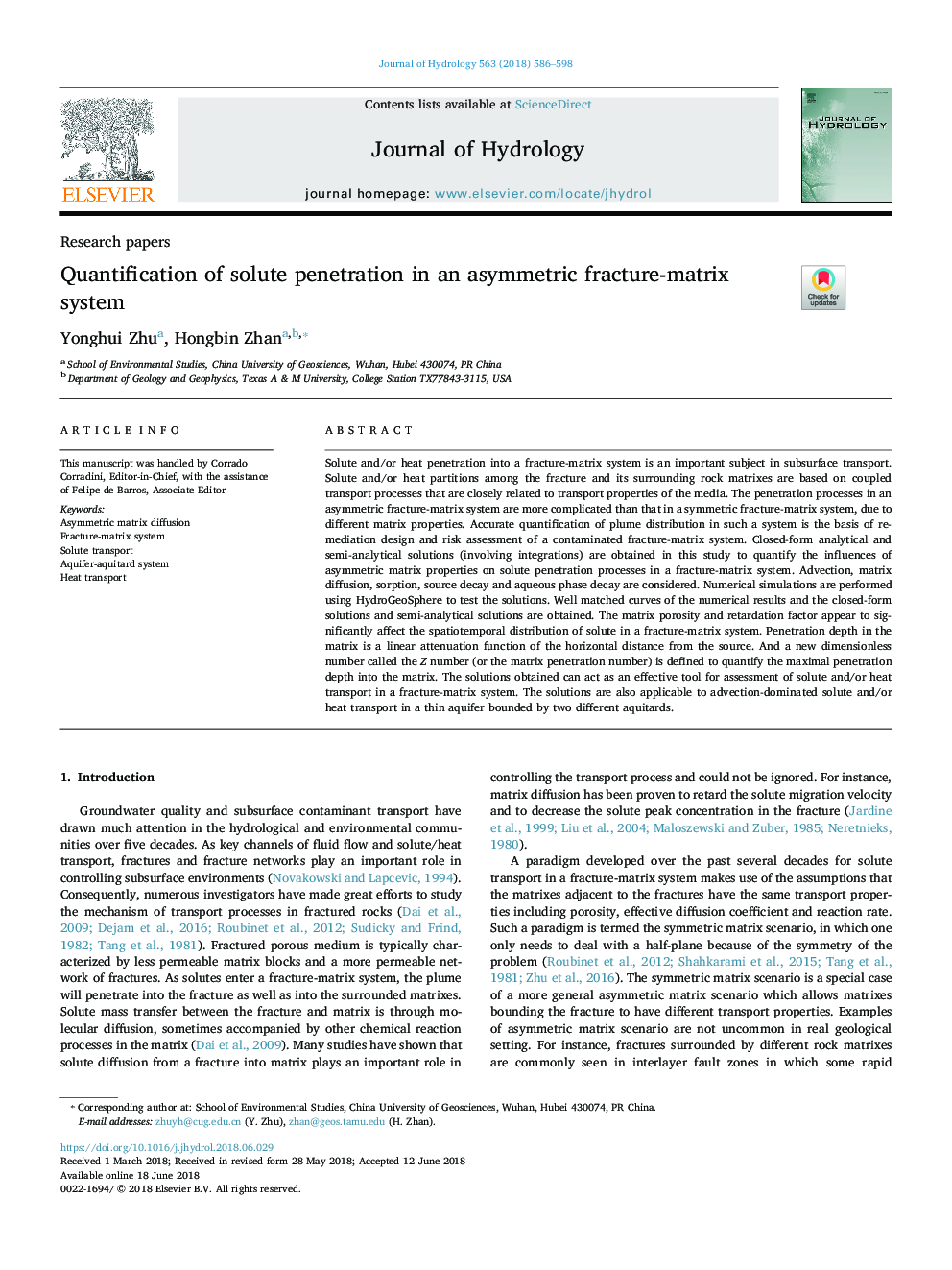| Article ID | Journal | Published Year | Pages | File Type |
|---|---|---|---|---|
| 8894591 | Journal of Hydrology | 2018 | 13 Pages |
Abstract
Solute and/or heat penetration into a fracture-matrix system is an important subject in subsurface transport. Solute and/or heat partitions among the fracture and its surrounding rock matrixes are based on coupled transport processes that are closely related to transport properties of the media. The penetration processes in an asymmetric fracture-matrix system are more complicated than that in a symmetric fracture-matrix system, due to different matrix properties. Accurate quantification of plume distribution in such a system is the basis of remediation design and risk assessment of a contaminated fracture-matrix system. Closed-form analytical and semi-analytical solutions (involving integrations) are obtained in this study to quantify the influences of asymmetric matrix properties on solute penetration processes in a fracture-matrix system. Advection, matrix diffusion, sorption, source decay and aqueous phase decay are considered. Numerical simulations are performed using HydroGeoSphere to test the solutions. Well matched curves of the numerical results and the closed-form solutions and semi-analytical solutions are obtained. The matrix porosity and retardation factor appear to significantly affect the spatiotemporal distribution of solute in a fracture-matrix system. Penetration depth in the matrix is a linear attenuation function of the horizontal distance from the source. And a new dimensionless number called the Z number (or the matrix penetration number) is defined to quantify the maximal penetration depth into the matrix. The solutions obtained can act as an effective tool for assessment of solute and/or heat transport in a fracture-matrix system. The solutions are also applicable to advection-dominated solute and/or heat transport in a thin aquifer bounded by two different aquitards.
Keywords
Related Topics
Physical Sciences and Engineering
Earth and Planetary Sciences
Earth-Surface Processes
Authors
Yonghui Zhu, Hongbin Zhan,
